Accepted Scientific Name: Epithelantha micromeris subs. greggii (Engelm.) N.P.Taylor
Cactaceae Consensus Init. 5: 12. 1998
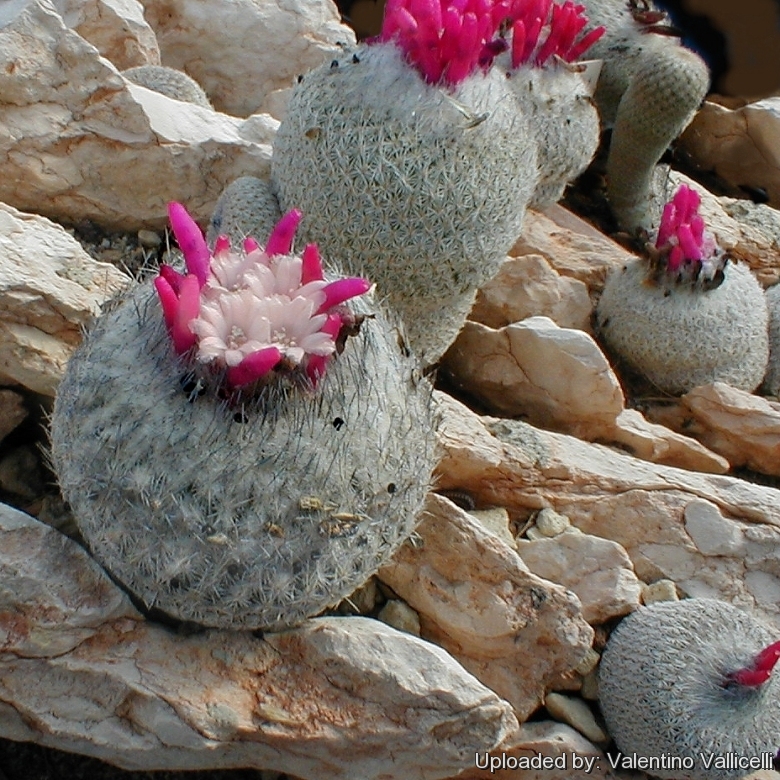
Cactus micromeris var. greggii (Epithelantha micromeris subs. greggii) Photo by: Valentino Vallicelli
SB321 (Collector: Steven Brack) Cuesta la Muralla, Coahuila, Mexico (A form with black tipped spines)
Origin and Habitat: Northern Mexico, especially around Saltillo, Coahuila.
Altitude range: Around: 700-1300 m above sea level.
Habitat and ecology: Epithelantha greggiiSN|6929]]SN|6929]] grows on hills with low slopes,
mountain plateaus, on coarse stone chips and gravels.
Associated species: Echinocactus horizonthaloniusSN|1711]]SN|1711]], Ariocarpus retususSN|2114]]SN|2079]], Ariocarpus fissuratusSN|2079]]SN|2114]] subsp. fissuratus, Coryphantha poselgerianaSN|10055]]SN|10245]], Coryphantha pseudoechinusSN|10048]]SN|10393]], Coryphantha poselgerianaSN|10245]]SN|10245]], Coryphantha delaetianaSN|10393]]SN|10048]], Coryphantha gladiispinaSN|10245]]SN|10055]], Grussonia bradtiana, Escobaria strombiliformis, Escobaria strombiliformis, Lophophora williamsiiSN|1117]]SN|1117]], Thelocactus bicolorSN|3420]]SN|3420]], Echinomastus mariposensisSN|26084]]SN|26084]], Mammillaria lasiacanthaSN|9355]]SN|9075]], Opuntia microdasysSN|15506]]SN|15506]], Neolloydia conoideaSN|10089]]SN|10089]], Mammillaria pottsiiSN|9075]]SN|9355]] etc...
More...Synonyms:
See all synonyms of Epithelantha micromeris
Common Names include:
ENGLISH: Button Cactus
SPANISH (Español): Mulatto (Mexico), Tapone (Mexico)
Description: Epithelantha micromeris subs. greggiiSN|6936]]SN|6928]] is the largest and most common of the Epithelantha micromerisSN|6928]]SN|6936]] subspecies that appears ashy grey and relatively rough, somewhat bristly in general aspect.
Stem: Branching, mostly spheric or obovoidal, often flat-topped with a depressed centre, 5-7,5 cm in diameter; surface completely obscured by spines.
Tubercles: Numerous, not confluent into ribs, hemispheric or short cylindric, very small, ca. 1-2 mm; arranged in tight spirals around the plant.
Areoles: Small at tips of tubercles, 1 mm long, nearly circular, elliptic when distended by flower or fruit, slightly woolly when young, copiously woolly only at sexually mature stem apex; areolar glands absent.
Spines: 20 or more chalky white, ashy grey to reddish brown, 3-5 mm long, spreading and radiating at an early age rather than pectinate and appressed on sides of stems, straight, terete, slender, innocuous. The upper ones much longer.
Roots: Diffuse (usually).
Flower: Inconspicuous, funnel-shaped, diurnal, deeper pink than the type, borne at adaxial margins of spine clusters in the plant top. Only partly opened just distal portion visible, as they barely stick out above the wool obscured by longer spines at stem apex.
Blooming season: Flowers in May-June.
Fruits: Indehiscent, bright red, thin narrowly cylindric, 18 × 2-3(-5) mm, weakly succulent, soon drying and papery, smooth, spineless; pulp absent; floral remnant deciduous. Fruiting summer.
More...Subspecies, varieties, forms and cultivars of plants belonging to the Epithelantha micromeris group
 Epithelantha micromeris (Engelm.) F.A.C.Weber in Bois: Miniature globose cactus, unbranched or in small clumps. Produces small pink flowers followed by attractive red fruits . Spines are white or greysh, innocuous and appressed on sides of stems.
Epithelantha micromeris (Engelm.) F.A.C.Weber in Bois: Miniature globose cactus, unbranched or in small clumps. Produces small pink flowers followed by attractive red fruits . Spines are white or greysh, innocuous and appressed on sides of stems. Epithelantha micromeris f. cristata hort.: This is a miniature cactus that makes a nice and tangled cluster of fine crests. The stem surface is completely obscured by small pectinated ashy-grey to white spines.
Epithelantha micromeris f. cristata hort.: This is a miniature cactus that makes a nice and tangled cluster of fine crests. The stem surface is completely obscured by small pectinated ashy-grey to white spines. Epithelantha micromeris var. dickisoniae hort.: Minute clustering cactus of doubtful status (but common in cultivation), it shows similarities with Epithelantha micromeris subsp. polycephala and Epithelantha pachyrhiza. Spines are whitish turning to a brownish tinge in adult plant's crown. Roots: Tuberose.
Epithelantha micromeris var. dickisoniae hort.: Minute clustering cactus of doubtful status (but common in cultivation), it shows similarities with Epithelantha micromeris subsp. polycephala and Epithelantha pachyrhiza. Spines are whitish turning to a brownish tinge in adult plant's crown. Roots: Tuberose. Epithelantha micromeris f. elongata (Backeb.) Bravo: It has elongated stems and a thick tap-root. It is intermediate between E. micromeris and E. pachyrhiza. Distribution: Ramos Arispe, Coahuila, Mexico.
Epithelantha micromeris f. elongata (Backeb.) Bravo: It has elongated stems and a thick tap-root. It is intermediate between E. micromeris and E. pachyrhiza. Distribution: Ramos Arispe, Coahuila, Mexico. Epithelantha micromeris subs. greggii (Engelm.) N.P.Taylor: This subspecies has a rough, somewhat bristly appearance with iIndividual stems up to 5 cm or more in diameter,. Spines are chalky white to reddish brown. Distribution: Northern Mexico, especially Saltillo, Coahuila.
Epithelantha micromeris subs. greggii (Engelm.) N.P.Taylor: This subspecies has a rough, somewhat bristly appearance with iIndividual stems up to 5 cm or more in diameter,. Spines are chalky white to reddish brown. Distribution: Northern Mexico, especially Saltillo, Coahuila. Epithelantha micromeris subs. greggii f. cristata: crested form.
Epithelantha micromeris subs. greggii f. cristata: crested form. Epithelantha micromeris var. neomexicana n.n.: This is the population found in New Mexico (USA) but this taxon is not easily recognizable from other Epitelantha micromeris (if not the same identical plant)
Epithelantha micromeris var. neomexicana n.n.: This is the population found in New Mexico (USA) but this taxon is not easily recognizable from other Epitelantha micromeris (if not the same identical plant) Epithelantha micromeris subs. pachyrhiza (W.T.Marshall) N.P.Taylor: It has tuberousroots and a stem only partly obscured by the white to orange-tan spines; Distribution: Strictly endemic of southeast and northeast of Saltillo.
Epithelantha micromeris subs. pachyrhiza (W.T.Marshall) N.P.Taylor: It has tuberousroots and a stem only partly obscured by the white to orange-tan spines; Distribution: Strictly endemic of southeast and northeast of Saltillo. Epithelantha micromeris subs. pachyrhiza f. cristata
Epithelantha micromeris subs. pachyrhiza f. cristata Epithelantha micromeris subs. polycephala (Backeb.) Glass: Clustering miniature cactus; an old plant may have more than 100 heads, and be 10 cm of diameter. Spines are grey/whitish, pastel or ocre. Distribution: it occurs in a limited area of Coahuila.
Epithelantha micromeris subs. polycephala (Backeb.) Glass: Clustering miniature cactus; an old plant may have more than 100 heads, and be 10 cm of diameter. Spines are grey/whitish, pastel or ocre. Distribution: it occurs in a limited area of Coahuila. Epithelantha micromeris var. rufispina (Bravo) Backeb.: Minute globular cactus, becoming somewhat elongated when old. the spines are numerose up to 40 whitish all radials, turning to a grey-reddish or brownish tinge in adult plants crown. The spine base is reddish.
Epithelantha micromeris var. rufispina (Bravo) Backeb.: Minute globular cactus, becoming somewhat elongated when old. the spines are numerose up to 40 whitish all radials, turning to a grey-reddish or brownish tinge in adult plants crown. The spine base is reddish.- Epithelantha micromeris var. texensis n.n.: This is the population found in Texas (USA) but this taxon is not easily recognizable from other Epitelantha micromeris (if not the same identical plant)
 Epithelantha micromeris var. texensis f. cristata hort.: Crested form.
Epithelantha micromeris var. texensis f. cristata hort.: Crested form. Epithelantha micromeris subs. unguispina (Boed.) N.P.Taylor: It is a little larger than the standard form. Stem globular, up to 6 cm, often clumping over time. It generally has a small projecting black-tipped central spine, 4-5mm long. Origin: Near Monterrey, Nuevo Leon, south into San Luis Potosi.
Epithelantha micromeris subs. unguispina (Boed.) N.P.Taylor: It is a little larger than the standard form. Stem globular, up to 6 cm, often clumping over time. It generally has a small projecting black-tipped central spine, 4-5mm long. Origin: Near Monterrey, Nuevo Leon, south into San Luis Potosi.
Bibliography: Major references and further lectures
1) James Cullen, Sabina G. Knees, H. Suzanne Cubey “The European Garden Flora Flowering Plants: A Manual for the Identification of Plants Cultivated in Europe, Both Out-of-Doors and Under Glass” Cambridge University Press, 11/Aug./2011
2) David Hunt, Nigel Taylor “The New Cactus Lexicon” DH Books, 2006
3) Edward F. Anderson “The Cactus Family” Timber Press, 2001
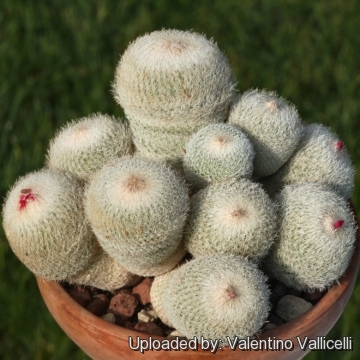 Cactus micromeris var. greggii (Epithelantha micromeris subs. greggii) Photo by: Valentino Vallicelli
Cactus micromeris var. greggii (Epithelantha micromeris subs. greggii) Photo by: Valentino Vallicelli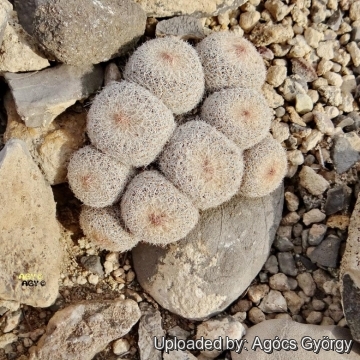 Clustering habit. Mexico. (Epithelantha micromeris subs. greggii) Photo by: Agócs György
Clustering habit. Mexico. (Epithelantha micromeris subs. greggii) Photo by: Agócs György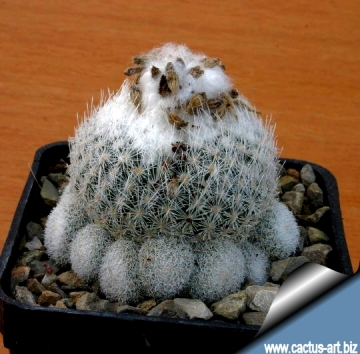 SB1624 Collector: Steven Brack) Locality: Santa Theresa, Coahuila, Mexico (Epithelantha micromeris subs. greggii) Photo by: Cactus Art
SB1624 Collector: Steven Brack) Locality: Santa Theresa, Coahuila, Mexico (Epithelantha micromeris subs. greggii) Photo by: Cactus Art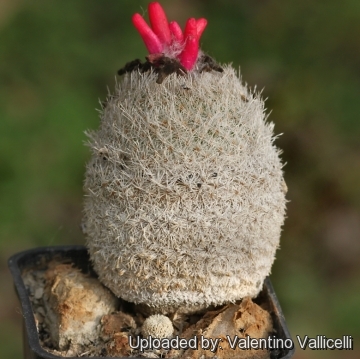 Cactus micromeris var. greggii (Epithelantha micromeris subs. greggii) Photo by: Valentino Vallicelli
Cactus micromeris var. greggii (Epithelantha micromeris subs. greggii) Photo by: Valentino Vallicelli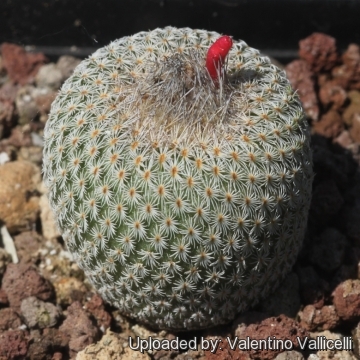 Cactus micromeris var. greggii (Epithelantha micromeris subs. greggii) Photo by: Valentino Vallicelli
Cactus micromeris var. greggii (Epithelantha micromeris subs. greggii) Photo by: Valentino Vallicelli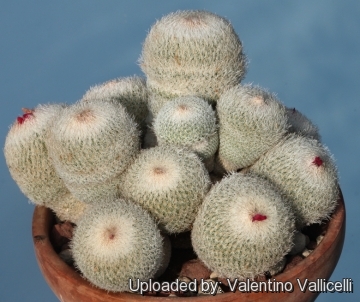 Cactus micromeris var. greggii (Epithelantha micromeris subs. greggii) Photo by: Valentino Vallicelli
Cactus micromeris var. greggii (Epithelantha micromeris subs. greggii) Photo by: Valentino Vallicelli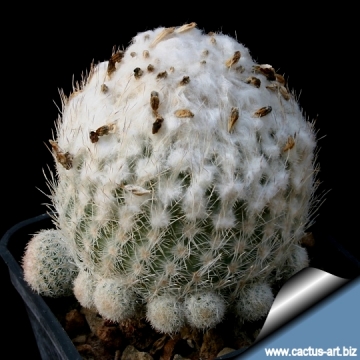 Cactus micromeris var. greggii (Epithelantha micromeris subs. greggii) Photo by: Cactus Art
Cactus micromeris var. greggii (Epithelantha micromeris subs. greggii) Photo by: Cactus ArtSend a photo of this plant.The gallery now contains thousands of pictures, however it is possible to do even more. We are, of course, seeking photos of species not yet shown in the gallery but not only that, we are also looking for better pictures than those already present.
Read More... Cultivation and Propagation: Although regarded as a choice and difficult plant, in cultivation it is relatively easy. Sometimes it is grafted to avoid root rot problems. Suited for airy exposures.
Soil: It needs a particularly well-draining soil mix.
Exposure: Light shade to full sun.
Water: Water sparingly as it is susceptible to over-watering. Keep dry in winter.
Frost Tolerance: Depending on the variety, will handle -12° C (Temperature Zone: USDA 8-11). But a plant kept perfectly dry can easily survive at winter night-time temperatures below 0° C.
Pests & diseases: Epithelantha micromeris subs. greggiiSN|6928]]SN|6928]] is prone to rot, therefore, underpot in a smaller container filled with very porous compost.
Propagation: Seeds, offsets or graft. Seeds can be sown in the spring or summer. The seedlings should not be disturbed until they are well rooted, after which they can be planted separately in small pots.
More...


















